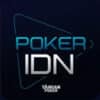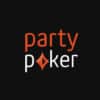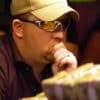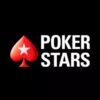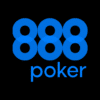I’ve spent countless hours honing my bluffing skills, analyzing every move, and learning from every mistake.
Now, I’m ready to share my knowledge with you. I’ll reveal 11 expert tips for mastering bluffing strategies in tournament play in this article.
From recognizing the perfect moment to bluff to understanding your opponents’ tells and perfecting your technique, I’ll guide you toward becoming a formidable bluffing master.
Get ready to take your game to the next level.

1. Understanding the Art of Bluffing
Understanding bluffing is crucial for success in tournament play. Bluffing tells, and mind games are essential elements of poker strategy.
Bluffing tells are subtle cues players give off when bluffing or holding a strong hand. These tells can include nervousness, fidgeting, or changes in breathing patterns. Skilled players can gain valuable insight into their opponents’ hands by observing and interpreting these signals.
Mind games, on the other hand, involve strategic manipulation of opponents’ perceptions and emotions. This can be achieved through tactics such as aggressive betting, feigning confidence, or intentionally misrepresenting the strength of one’s hand.
Mastering the art of bluffing requires a deep understanding of human psychology and the ability to read and manipulate others effectively.
2. Recognizing Good Bluffing Opportunities
To effectively recognize good bluffing opportunities, I rely on my ability to observe opponents’ behavior and assess the current game situation.
One of the strategies for bluffing success is timing your bluffs effectively. It’s crucial to pay attention to the actions and reactions of your opponents during the game. Look for patterns or inconsistencies in their betting behavior. If you notice that a player suddenly becomes more cautious or hesitant, it could be a sign that they have a weak hand.
Additionally, assessing the current game situation is vital. Consider factors such as the size of the pot, the strength of your hand, and the betting history of the players involved.
3. Reading Your Opponents
When playing in a poker tournament, one of the key skills to develop is the ability to read your opponents. This involves interpreting their non-verbal cues and understanding the psychology behind their behavior.
By paying attention to their facial expressions, body language, and betting patterns, you can gain valuable insights into the strength of their hand and make more informed decisions.
Being able to read your opponents accurately can give you a significant advantage at the poker table.
Non-Verbal Cues Interpretation
In an article titled ‘Mastering Bluffing Strategies: 11 Tips for Tournament Play’, I’ve found that interpreting non-verbal cues can be a crucial skill for reading opponents. Non-verbal cues analysis allows players to gain valuable insights into their opponents’ intentions and potential bluffing tells.
Here are three key aspects to consider when interpreting non-verbal cues:
- Body Language: Pay close attention to your opponent’s body movements, such as facial expressions, hand gestures, and posture. These subtle cues can reveal their confidence levels or discomfort, indicating whether they have a strong hand or are bluffing.
- Eye Contact: The eyes can provide valuable information. Maintaining steady eye contact can signify confidence, while avoiding eye contact may indicate nervousness or dishonesty.
- Timing and Bet Sizing: Observe how your opponents act and respond during different betting rounds. Sudden changes in betting patterns or hesitation before placing a bet can indicate bluffing.
Psychology Behind Opponent’s Behavior
Analyzing the psychology behind my opponent’s behavior allows me to read and understand their intentions during tournament play effectively. I can gain valuable insights into their mindset and decision-making process by conducting a behavioral analysis.
One key aspect of an opponent’s psychology is their ability to deceive and manipulate through their actions and expressions. Observing their body language, facial expressions, and betting patterns is crucial to uncover any potential tells. For example, a sudden increase in betting size may indicate a strong hand, while hesitation and fidgeting may suggest weakness.
Additionally, understanding their playing style and tendencies can further enhance my ability to predict their moves and adjust my strategy accordingly. By mastering the art of reading opponents, I’m better equipped to make informed decisions and increase my chances of success in tournament play.
4. Analyzing Betting Patterns
Studying opponents’ betting patterns is crucial for gaining an edge in tournament play. By analyzing their bet sizing and bluffing frequencies, I can gather valuable information to inform my betting decisions.
Here are three key insights that can be gained from analyzing betting patterns:
- Bet sizing: Paying attention to how much an opponent bet can reveal their confidence in their hand. A small bet may indicate a weak hand or a desire to induce a call, while a large bet often signifies a strong hand. Understanding an opponent’s bet sizing tendencies can help me make more informed decisions about calling, raising, or folding.
- Bluffing frequencies: Observing how often an opponent bluffs can provide insights into their playing style and overall strategy. If an opponent rarely bluffs, giving their bets more credibility may be wise. On the other hand, if an opponent bluffs frequently, I can exploit this by calling or raising their bluffs more often.
- Patterns and tendencies: By tracking an opponent’s betting patterns over time, I can identify any consistent tendencies they may have. For example, they may consistently make smaller bets when holding a strong hand or regularly bluff when faced with aggression. Recognizing these patterns can help me anticipate their moves and make more accurate reads in future hands.
5. The Role of Position in Bluffing
Position plays a crucial role in bluffing strategies during tournament play. The effectiveness of a bluff can be greatly influenced by the position of the player. Being in a late position allows for more information to be gathered before making a bluff while being in an early position requires a stronger hand to successfully pull off a bluff.
Understanding the relationship between position and bluffing can significantly impact one’s success in poker tournaments.
Position’s Impact on Bluffing
During a poker tournament, I’ve noticed that where I’m seated at the table significantly influences my bluffing strategy.
Bluffing in an early position requires caution because players in later positions can act after you. It’s essential to consider their range of hands and the likelihood of them calling or raising your bluff. In an early position, bluffing should be done with stronger hands to increase the chances of success.
On the other hand, bluffing in a late position allows for more aggressive play. Since you have the advantage of acting last, you can observe your opponents’ actions and make informed decisions. Bluffing in a late position can be done with a wider range of hands, taking advantage of the uncertainty created by your position.
Bluffing Effectiveness and Position
How can my seating position at the poker table impact the effectiveness of my bluffing strategy in a tournament?
The role of position in bluffing is crucial and can greatly influence the success of your bluff. Regarding bluffing, your position at the table determines the amount of information you have about your opponent’s hands.
Being in a late position provides an advantage as you get to act after most of the players, allowing you to gather more information before making a bluff. Additionally, your position can affect your bluffing range.
In early positions, your bluffing range should be narrower, as more players are left to act and have a higher chance of facing strong hands. However, in late positions, your bluffing range can be wider as fewer players are left to act, and a higher chance of weaker hands.
Therefore, understanding and utilizing position strategy is essential in maximizing the effectiveness of your bluffing strategy.
6. Creating a Table Image
One key aspect of tournament play is establishing a strong table image. Table manipulation and building a tight image are essential strategies that can significantly impact your success in poker tournaments.
Here are three tips to help you create an effective table image:
- Choose your starting hands wisely: By playing only premium hands, you’ll appear selective and cautious, which can help build a tight image.
- Control your emotions: Maintaining a calm and composed demeanor at the table will make it harder for your opponents to read your hand or detect any weaknesses.
- Mix up your play: Occasionally bluffing or making unexpected moves can add an element of unpredictability to your table image, making it harder for your opponents to assess your gameplay accurately.
7. The Importance of Aggression
Establishing a solid table image through controlled aggression is crucial for success in poker tournaments. The psychology behind aggression is an essential aspect to understand when it comes to maximizing aggression for successful bluffing.
Aggression in poker isn’t just about betting big or raising frequently; it’s a strategic tool used to manipulate opponents and gain an advantage. By being aggressive, players can project confidence and intimidate their opponents, forcing them to make mistakes or fold when they have a weaker hand.
However, it’s essential to strike a balance and use aggression selectively, as being too aggressive can backfire and expose weaknesses. Ultimately, mastering the art of aggression in poker tournaments requires a deep understanding of the psychological dynamics at play and the ability to exploit them to your advantage.
8. The Concept of Semi-Bluffing
Semi-bluffing is an effective strategy in poker tournaments that involves betting with a hand that has the potential to improve. It differs from pure bluffing, where the hand has no potential, as it allows for the possibility of winning the pot even if the opponent calls.
However, semi-bluffing also carries a level of risk, as it relies on the possibility of improving the hand on future community cards.
Semi-Bluffing: Effective Strategy
I’ve found that using a well-timed combination of strong hands and potential draws can be a highly effective strategy in tournament play. Semi-bluffing allows for aggression while minimizing risk, and it can put pressure on opponents to make difficult decisions.
When it comes to semi-bluffing ranges, it’s important to consider the strength of your hand and the potential of your draw. Here are three key points to keep in mind when utilizing semi-bluffing in tournament play:
- Assess the board texture: Look for coordinated boards with multiple draws that can give you a range advantage.
- Consider your position: Semi-bluffing is most effective when you have a position on your opponents, allowing you to control the pot size and apply pressure.
- Please pay attention to your opponents’ tendencies: Semi-bluffing works best against opponents who are more likely to fold to aggression, so take note of their playing style and adjust your strategy accordingly.
Semi-Bluffing Vs. Pure Bluffing
When discussing the concept of semi-bluffing versus pure bluffing in tournament play, it’s important to understand the strategic differences between the two approaches.
Semi-bluffing involves making a bet or raise with a hand that isn’t currently the best but has the potential to improve and become the best. This strategy is highly effective in poker tournaments, allowing players to build the pot and pressure their opponents.
The frequency of semi-bluffing and the hand selection are key factors in its success. By choosing hands with strong immediate value and promising potential, players can effectively execute semi-bluffs and maximize their chances of winning.
In the next section, let’s explore the risks and rewards associated with semi-bluffing.
Semi-Bluffing: Risk and Reward?
Executing a successful semi-bluff in tournament play requires a calculated balance between risk and reward. Semi-bluffing, unlike pure bluffing, involves having a hand that has the potential to improve but isn’t yet a strong hand. By semi-bluffing, players can effectively balance the risk of bluffing with the reward of potentially winning the pot.
Here are three key aspects to consider when utilizing the concept of semi-bluffing:
- Balancing risk: Semi-bluffing requires assessing the likelihood of improving your hand and the potential consequences if you don’t. It involves weighing the probability of success against the possible loss if the bluff is called.
- Exploiting opponent’s weaknesses: Semi-bluffing can be effective when opponents have shown signs of vulnerability or uncertainty. Capitalizing on their weaknesses can increase the likelihood of them folding or making a costly mistake.
- Timing: Choosing the right moment to execute a semi-bluff is crucial. It’s important to consider the dynamics of the table, the size of the pot, and the type of opponents you’re facing. Timing your semi-bluffs well can maximize their effectiveness while minimizing risk.
9. Moderating the Frequency of Bluffing
Maintaining a balanced frequency of bluffing is crucial in mastering tournament play. As players, we must constantly make bluffing frequency adjustments to keep our opponents guessing.
However, finding the right balance between bluffing and value bets is equally important. Bluffing too often can lead to predictability, making it easier for opponents to call us down. On the other hand, bluffing too infrequently can result in missed opportunities to take down pots.
To strike this balance, we must study our opponents’ playing styles and tendencies. By observing how they react to different bet sizes and situations, we can determine when to bluff and when to play for value.
Transitioning into the next section, understanding the risks and rewards of bluffing is crucial in making strategic decisions.
10. Risks and Rewards of Bluffing
To effectively navigate the complexities of tournament play, I must carefully weigh the risks and rewards associated with bluffing. Bluffing is a powerful tool in poker, but it also carries inherent risks that can lead to costly mistakes.
Here are the risks of bluffing in online poker:
- Getting caught: If opponents can see through my bluff, I risk losing credibility and future bluffing opportunities.
- Misreading opponents: Bluffing requires accurately assessing the likelihood that opponents will fold. Misjudging this can result in failed bluffs and wasted chips.
- Depleting chip stack: Frequent bluffing can lead to a dwindling chip stack, making it harder to recover if the bluff fails.
On the other hand, there are also rewards that come with successful bluffing:
- Winning uncontested pots: Successful bluffs allow me to win pots without having the best hand, increasing my chip stack.
- Building an aggressive image: Consistent bluffing can create an image of aggression, making opponents more likely to fold to future bluffs.
- Psychological advantage: Bluffing can cause opponents to doubt their own hands, leading to suboptimal decisions and potential gains for me.
11. Perfecting Your Bluffing Technique
As I hone my bluffing technique in tournament play, one key aspect to focus on is understanding my opponents’ tendencies and behaviors.
When it comes to bluffing in online poker, recognizing bluffing tells and reading body language becomes more challenging. Without face-to-face interactions, paying attention to patterns in their betting behavior becomes crucial.
For example, if a player suddenly increases their bets or makes large bets, it could indicate a bluff. Additionally, timing can be a valuable clue. Quick bets or long pauses before betting may reveal nervousness or confidence.
It’s also important to observe how opponents react to certain cards on the board. By carefully analyzing these factors, I can improve my ability to bluff effectively and make informed decisions in online poker tournaments.
Conclusion
In conclusion, mastering bluffing strategies in tournament play requires a deep understanding of the art of bluffing, the ability to recognize good bluffing opportunities, and the skill to read opponents and analyze their betting patterns.
It’s crucial to consider the role of position and the concept of semi-bluffing while also moderating the frequency of bluffing.
The risks and rewards of bluffing should be carefully weighed, and one’s bluffing technique should be perfected through practice and experience.








